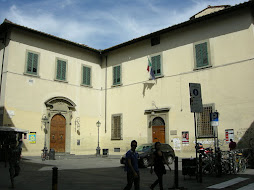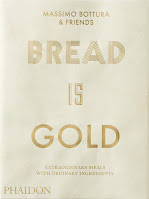Joe Profaci - Mafia boss
Sicilian who influenced profile of Mario Puzo’s Godfather
The Mafia boss Giuseppe ‘Joe’ Profaci, one of the real-life gangsters who influenced the author Mario Puzo as he created the character of his fictional mob boss Vito Corleone in The Godfather, was born in Villabate in Sicily on this day in 1897. It was after studying Profaci’s crime career that Puzo decided that Corleone, who is thought to have been based largely on one of Profaci's fellow mob bosses, Carlo Gambino, should hide his criminal activities behind his ‘legitimate’ identity as an olive oil importer, mirroring what Profaci did in real life in New York. Profaci is believed to have started importing olive oil before he became heavily involved in crime but chose to keep the business going as one of a network of legitimate companies, so that he could mask the proceeds of his crime empire and satisfy the authorities that he was paying his taxes. In fact, the olive oil business became a hugely lucrative concern, particularly when shortages in the Second World War enabled him to sell the product at premium prices. The irony of Profaci’s criminal life was that his legitimate companies, of which he had as many as 20, actually provided work for hundreds of New Yorkers. Read more…
__________________________________________
Antonio Di Pietro – magistrate and politician
Former policeman who led mani pulite corruption investigations
The politician and former magistrate Antonio Di Pietro, who uncovered wide-ranging corruption in the Italian government in a scandal that changed the landscape of Italian politics, was born on this day in 1950 in Molise. Di Pietro was the lead prosecutor in the so-called mani pulite trials in the early 1990s, which led to many politicians and businessmen being indicted and to the collapse of the traditional Socialist and Christian Democratic parties. The Christian Democrats had been the dominant force in Italian politics since the formation of the Italian Republic at the end of the Second World War but after several high-profile arrests and resignations and poor results in the 1992 general election and 1993 local elections the party was disbanded in 1994. The Italian Socialist Party was dissolved in the same year following the resignation of party secretary and former prime minister Bettino Craxi, who was the most high-profile casualty in the corruption scandal. It was also known as tangentopoli, which can be roughly translated as “Bribesville”. Di Pietro was born into a poor rural family in Montenero di Bisaccia, a hill town in the province of Campobasso in the Molise region. Read more…
_________________________________________
Saint Charles Borromeo
Great reformer earned appreciation after his death
Charles (Carlo) Borromeo, a leading Catholic figure who led the movement to combat the spread of Protestantism, was born on this day in Milan in 1538. Part of the noble Borromeo family, he became a Cardinal and brought in many reforms to benefit the Church, which made him unpopular at the time. But he was held in high regard after his death and was quickly made a saint by Pope Paul V. Borromeo was born at the Castle of Arona on Lake Maggiore, near Milan. His father was Count of Arona and his mother was part of the Medici family. He was educated in civil and canon law at the University of Pavia. When his uncle, Cardinal Giovanni Angelo Medici became Pope Pius IV in 1559, Borromeo was brought to Rome and given a post in the Vatican. The following year the Pope made him a Cardinal and asked him to supervise the Franciscans, Carmelites and Knights of Malta and organise the last session of the Council of Trent, which was being held in Trento to reform the Church and counter the spread of Protestantism. The Council issued a long list of decrees covering disputed aspects of the Catholic religion as well as denouncing what it considered to be heresies committed in the name of Protestantism. Read more…
_______________________________________
Book of the Day: The Mafia Encyclopedia; From Accardo to Zwillman (Third Edition), by Carl Sifakis
Organised crime is the greatest criminal phenomenon of our time. From Al Capone, who boldly claimed his bootlegging activities were a public service, to John Gotti, the "Teflon don" who died in prison, these criminals have garnered headlines and captured the public imagination with their flamboyant lifestyles and colourful attitudes. Immortalised in books, movies, and popular television shows such as The Sopranos and Growing Up Gotti, these gangsters, godfathers, hitmen, and dons have taken their place in criminal mythology, but the reality of their underworld endeavours is something entirely different. The Mafia Encyclopedia provides a comprehensive survey of the mob's most influential perpetrators and personalities, including their hangouts and hideaways, their plays for power, their schemes and crimes, and their unique culture and jargon. More than 100 illustrations, approximately 500 entries, and a chronology overturn the Mafia myths with an unflinching look at the brutal and bizarre culture and characters of organised crime.
Carl Sifakis is a New York-based freelance writer, former newspaper crime reporter, and longtime student of organised crime. He has written several books on crime and criminals.
Home


.jpg)

.jpg)

.jpg)






.jpg)

.jpg)

